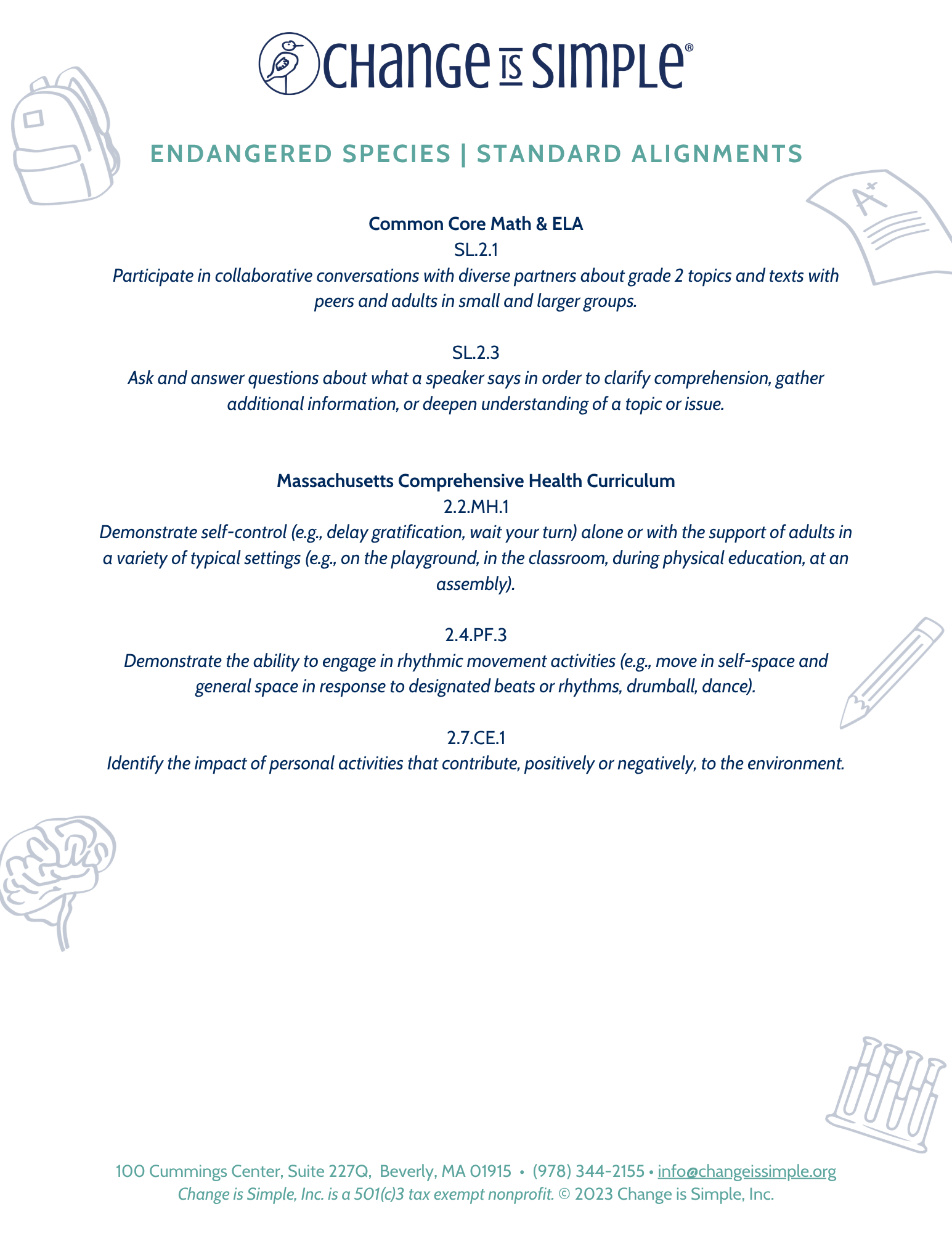Human Impacts on Endangered Animals
Lesson Objectives:
At the end of the workshop, students will be able to..
Define endangered and extinct animals
Explain the main reasons for animal endangerment
Understand where endangered animals live on a map
Essential Questions:
What key factors make endanger animals?
Why is it important for humans to protect endangered animals?
How can we help endangered animals?
Explore our resources
Click on the images to access each resource (available as a PDF or webpage)
Take-Home Guide
Information for parents & legal guardians (available in English and Spanish).
Información para padres de familia y tutores legales (disponible en Inglés y Español).
Standards Alignments
Explore the ways our program aligns with CCSS + NGSS standards.
Vocabulary
A review of terms covered during the CiS workshop.
Infographic
This infographic shows some specific animals at risk of going extinct.
Activity: Endangered Species Acrostic Poem
Acrostic poem template for learning about an endangered animal!
Social Emotional Learning
Drawing to build empathy and connections with an endangered species!
Reading Resources
Explore our staff picks for your students!
FPC Reading List Picks
Read these FPC picks + complete reflection activities with your students!
Video Resources
Videos for kids about native bees!
Challenge: Teacher Guide
Download this page to help your students complete their challenge.
Challenge: Student Guide
Print this out for your students to complete!
Student Reflection
Print and send home this reflection activity to show families what their student learned.
Background Information
Every day, humans from all over the world negatively impact many different animal species. Poaching, habitat loss, pollution, disease, and climate change, are exponentially increasing the thousands of species becoming endangered due to human impact. Despite the efforts to protect many different animal species such as elephants, rhinos, and tigers from poaching their populations are still decreasing at an alarming rate. The value of the poached goods are increasing as the populations of these animals decreases. Elephants and rhinos are poached for their tusks and horns that are made of keratin. Keratin is the same compound that human fingernails are made of, but coming from a different species they are thought to have magical medicinal properties with no scientific evidence to back up this claim. The habitat of native animals is greatly reduced due to deforestation as a result of urban expansion and the lumber industry. This causes more inter and intra competition as the same number of animals are competing for resources in a much smaller area. A smaller space with less resources leads to more endangered species. Research suggests that animals have been disappearing 1000x faster compared to 65 million years ago. Scientists are estimating that every day 100 species are going extinct and by the end of the 21st century, we will have lost 30-50% of Earth’s species.
Pollution in the form of fossil fuels, chemicals, and sound are increasingly causing more animal deaths. Toxins from different chemicals, such as pesticides, are continually being ingested by all species. Noise pollution from boats, oil rigs, and even motor vehicle traffic affect animal migration, communication and mating patterns. Chemical pollution from fossil fuels mixes with water in the atmosphere and leads to acidic rain which can make water poisonous. Physical pollution in the form of litter and trash is ending up in our oceans, affecting the animals there and creating microplastics. Burning fossil fuels causes the climate to warm, increasing the ease in which disease spreads. By using organic pesticides, implementing more renewable energy, and avoiding buying products made from endangered species, we can make a huge difference. Joining the efforts of organizations like the World Wildlife Fund, David Sheldrick Wildlife Fund, and Whale and Dolphin Conservation can also help protect these animals out in the field.












